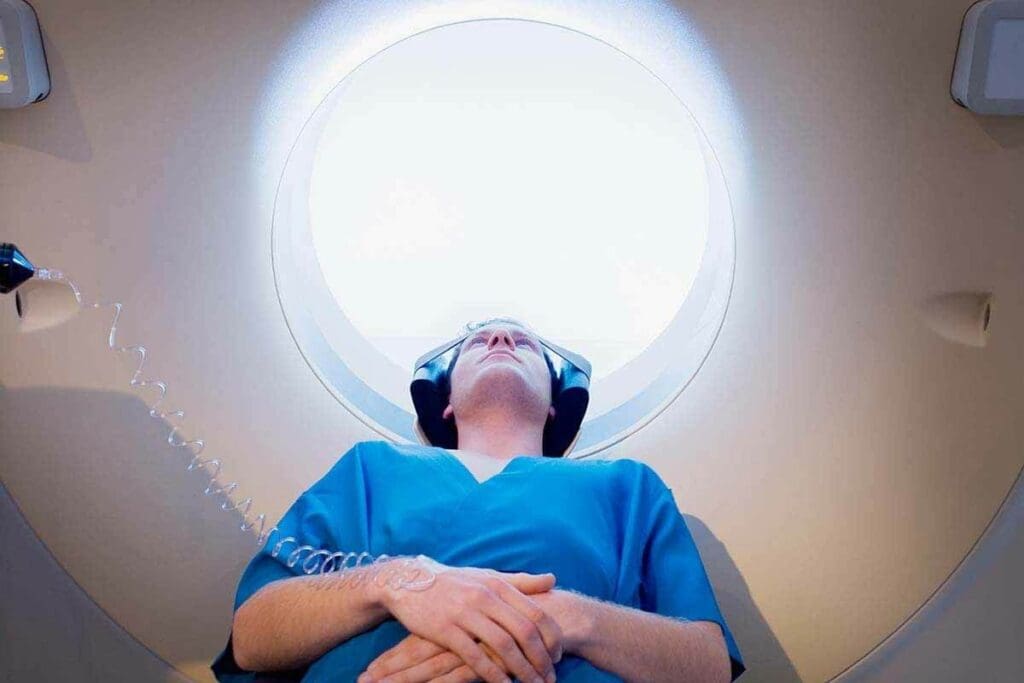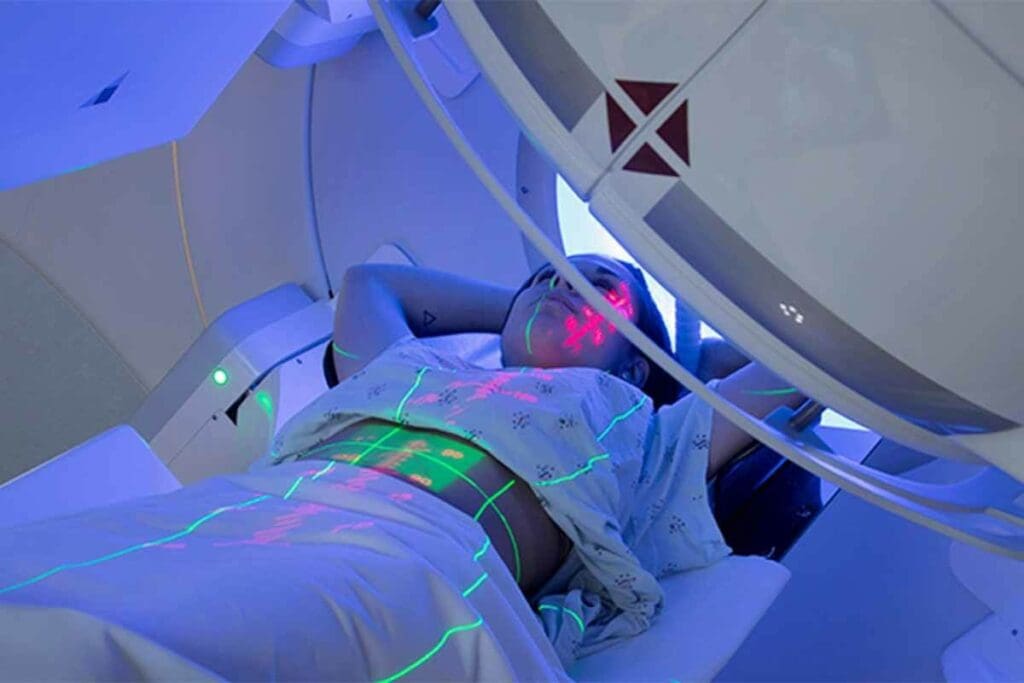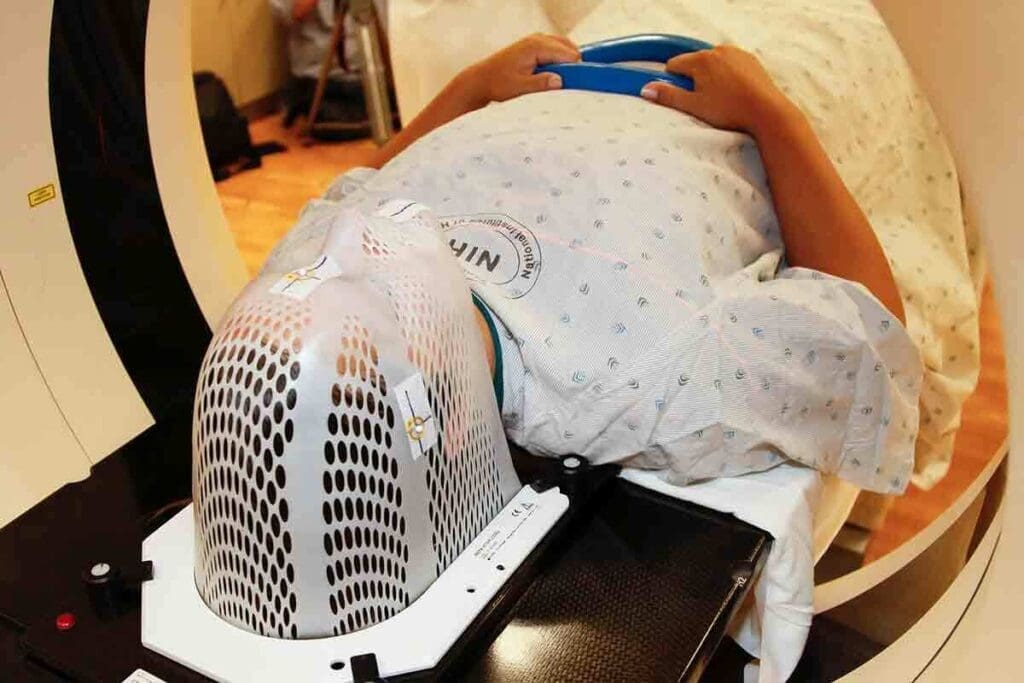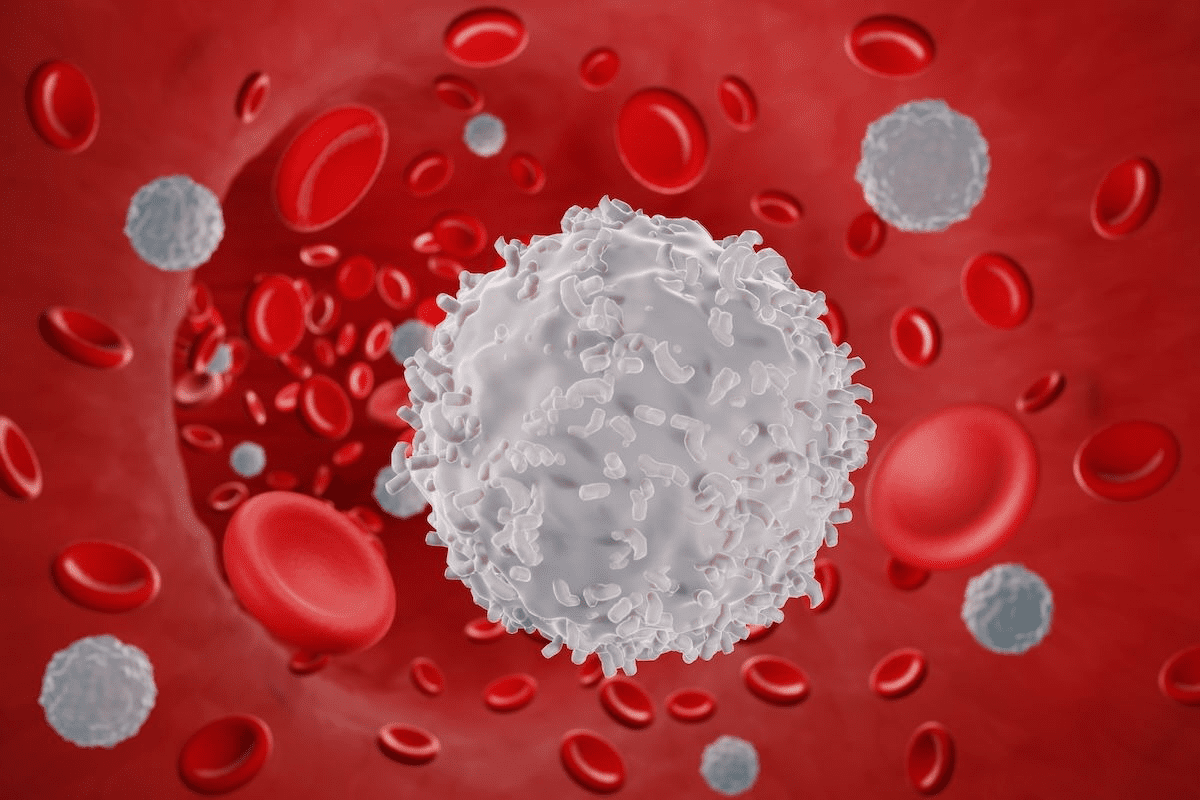Last Updated on November 27, 2025 by Bilal Hasdemir

Cancer patients now have new hope with liquid radiation therapy. This is a new systemic radiation therapy that targets cancer cells with great precision.
This method sends radioactive substances all over the body. It aims to destroy cancer cells. This approach offers better results and fewer side effects.
LivHospital is leading this medical breakthrough. They focus on trust, patient care, and advanced liquid radiation treatment. This gives cancer patients new hope.
Key Takeaways
- Precision targeting of cancer cells with liquid radiation therapy
- Better outcomes and fewer side effects
- Liv Hospital’s expertise in systemic radiation therapy
- Personalized care for cancer patients
- Advanced technology for effective treatment
What Is Liquid Radiation Treatment and How Does It Work

Liquid radiation treatment, also known as systemic radiation therapy, is a new way to fight cancer. It uses radioactive substances to find and kill cancer cells all over the body. This method is promising for treating many types of cancer, helping those with advanced or spread-out disease.
Definition and Basic Principles of Systemic Radiation
Systemic radiation therapy uses radioactive substances given orally or through an IV. These substances move through the body, focusing on cancer cells. The goal is to hit cancer cells hard while keeping healthy tissues safe.
“This therapy is a big step forward in cancer treatment, helping those with widespread disease.” It’s thanks to new tech in nuclear medicine and radiopharmaceuticals.
How Radioactive Substances Target Cancer Cells
Radioactive substances in liquid radiation therapy are made to find and stick to cancer cells. They use special receptors or molecules found more on cancer cells. Once attached, they release radiation that kills the cancer cells, leaving healthy tissue alone.
| Mechanism | Description |
| Receptor Binding | Radiopharmaceuticals bind to specific receptors on cancer cells |
| Localized Radiation | Delivers radiation directly to cancer cells, minimizing collateral damage |
Evolution of Liquid Radiotherapy in Cancer Treatment
Liquid radiation therapy has grown a lot over time. At first, it was hard to find good radiopharmaceuticals, and there were safety worries. Bu discoveries in radiochemistry and molecular biology have made better, more targeted treatments.
“The development of new radiopharmaceuticals has transformed the field of nuclear medicine, enabling us to treat cancers that were previously resistant to conventional therapies.” –
Now, liquid radiation therapy is seen as a key treatment for some cancers, like neuroendocrine tumors and advanced prostate cancer. Scientists keep working to make it even better for patients.
The Science Behind Liquid Radiation Treatment for Cancer

Liquid radiation treatment for cancer works by targeting and killing cancer cells while keeping healthy tissue safe. This is thanks to advanced molecular mechanisms. These mechanisms ensure the radioactive substance goes straight to the cancer cells.
Molecular Targeting Mechanisms
Liquid radiation treatment What is the new cancer treatment that melts tumors? uses molecular targeting mechanisms to get radioactive isotopes to cancer cells. It does this by attaching the radioactive substance to molecules that only cancer cells can bind to, like antibodies or peptides. Once attached, the radioactive isotope kills the cancer cell.
The main benefits of this method are:
- It’s very specific to cancer cells, which means less harm to healthy tissues
- It can reach and treat cancer cells that are hard to get to
- It might work on cancers that don’t respond well to other radiation treatments
Radiation Delivery at the Cellular Level
At the cellular level, radiation delivery is very precise. The radioactive isotopes used in liquid radiation treatment send out radiation over a short distance, usually just a few millimeters. This means the radiation goes right to the cancer cells, with less harm to the surrounding healthy tissue.
The success of radiation delivery at the cellular level depends on a few things, including:
- The type of radioactive isotope used
- The binding specificity of the targeting molecule
- The rate of radiation emission
Differences from External Beam Radiation
Liquid radiation treatment is different from external beam radiation. While external beam radiation comes from outside the body, liquid radiation treatment comes from inside. It delivers radiation directly to the cancer cells.
This internal approach has several benefits, including:
- Less damage to healthy tissues
- More effective against cancer that has spread or is hard to reach
- Potential to treat cancers that don’t respond to external beam radiation
Understanding the science behind liquid radiation treatment shows its great promise in fighting cancer.
Types of Liquid Radiation Therapy Available Today
Liquid radiation therapy offers new ways to fight cancer. It uses radioactive substances to kill cancer cells. This method is promising for many types of cancer.
Oral Radiation Pills for Cancer Treatment
Oral radiation pills are a type of liquid therapy taken by mouth. They target cancer cells and deliver radiation to tumors. Lutathera is one such pill for neuroendocrine tumors.
These pills are easy to use and don’t expose others to radiation. They can be taken at home, making treatment more comfortable.
Intravenous Radiation Therapy Protocols
Intravenous (IV) therapy injects radioactive substances into the blood. It treats cancer cells that are hard to reach. Pluvicto is used for metastatic prostate cancer.
IV therapy aims to hit cancer cells hard while protecting healthy tissues. The treatment plan depends on the cancer type and the patient’s health.
Radioactive Chemotherapy Drugs and Their Applications
Radioactive chemotherapy drugs combine two treatments. They target fast-growing cancer cells and deliver radiation. These drugs are good for many cancers, even those hard to treat.
| Therapy Type | Administration Method | Common Applications |
| Oral Radiation Pills | Oral | Neuroendocrine tumors |
| Intravenous Radiation Therapy | Intravenous | Metastatic prostate cancer |
| Radioactive Chemotherapy Drugs | Intravenous/Oral | Various cancers, including resistant types |
Liquid radiation therapy is a big step forward in cancer treatment. Knowing about these options helps patients and doctors choose the best treatments.
Radiation Pills for Cancer: Administration and Efficacy
Radiation pills are changing cancer treatment. They target cancer cells directly. This reduces harm to healthy tissues nearby.
Administration of Radiation by Pill
These pills are taken orally, in capsule or tablet form. They carry radioactive substances. These substances are absorbed by cancer cells, delivering radiation.
Lutathera is a key example. It treats certain neuroendocrine tumors. It uses lutetium-177, which targets tumor cells.
Lutathera for Neuroendocrine Tumors
Lutathera is effective against gastroenteropancreatic neuroendocrine tumors (GEP-NETs). Studies show it improves survival and response rates.
“Lutathera represents a major advancement in the treatment of advanced GEP-NETs, improving patients’ quality of life.”
| Treatment | Response Rate | Progression-Free Survival |
| Lutathera | 18% | 28.5 months |
| Standard Therapy | 5% | 8.5 months |
Pluvicto for Metastatic Prostate Cancer
Pluvicto is promising for metastatic prostate cancer. It targets prostate-specific membrane antigen (PSMA) on cancer cells. This delivers precise radiation.
Radiation Tablets for Other Cancer Types
Research is exploring radiation pills for other cancers. Their versatility comes from adapting to different tumors. This is done by changing the targeting mechanism.
The future of radiation pills in cancer treatment is bright. Advancements in targeted therapies and radioactive compounds are ongoing.
Intravenous Radiation Treatment: Process and Applications
Intravenous radiation treatment is a new way to fight cancer. It uses radioactive substances given through a vein to kill cancer cells. This method is promising because it targets cancer without harming healthy tissues.
IV Radiation Therapy Procedures
Getting IV radiation therapy involves several steps. First, patients prepare by stopping certain medicines and getting tests. Then, the radioactive substance is given through a vein, usually in a hospital or special center.
Administration Protocols: Doctors trained in IV radiation therapy give the treatment. The dose and type of radioactive substance depend on the cancer type, its stage, and the patient’s health.
Cancer Types Most Responsive to IV Radiation
Some cancers respond better to IV radiation therapy. These include certain neuroendocrine tumors and metastatic prostate cancer. This is because IV radiation targets cancer cells directly, allowing for higher doses.
| Cancer Type | Response to IV Radiation Therapy |
| Neuroendocrine Tumors | Highly responsive, with Lutathera |
| Metastatic Prostate Cancer | Responsive, with treatments like Pluvicto showing efficacy |
| Other Cancer Types | Varies, with ongoing research into new applications |
Patient Experience During Treatment
The experience of getting IV radiation therapy can differ. It’s like getting an IV infusion. Patients might stay in a special room to keep others safe from radiation.
Supportive care is key. Healthcare teams help manage side effects and keep patients comfortable.
Post-Administration Protocols
After treatment, patients are watched for any quick reactions. They get tips on how to protect others from radiation. Follow-up visits check how well the treatment worked and manage side effects.
IV radiation therapy is a big step forward in cancer treatment. It gives hope to patients with certain cancers. As research goes on, this treatment will likely help more people.
7 Key Benefits of Systemic Radiation Therapy
Systemic radiation therapy is a new way to fight cancer. It targets cancer cells and protects healthy tissues. This method is promising for treating different types of cancer.
Targeting Widespread or Metastatic Cancer
Systemic radiation therapy is great for treating cancer that has spread. It can reach cancer cells all over the body. This is very helpful for people with advanced cancer.
Precision in Attacking Cancer Cells
This therapy is precise in attacking cancer cells. It uses radioactive substances that only target cancer. This helps avoid harming healthy tissues.
Minimized Impact on Healthy Tissues
Systemic radiation therapy is gentle on healthy tissues. It’s good for patients who have had other treatments. The National Cancer Institute says it’s a solid treatment option.
| Benefit | Description |
| Targeting Metastatic Cancer | Effective against cancer that has spread |
| Precision | Minimizes damage to healthy tissues |
| Reduced Side Effects | Gentle on the body compared to traditional treatments |
| Option for Inoperable Tumors | Provides a treatment option where surgery is not possible |
Option for Previously Inoperable Tumors
It’s also a chance for patients with tumors that can’t be removed. This non-surgical treatment offers hope to those who thought they were out of options. It can greatly improve their quality of life.
In summary, systemic radiation therapy has many benefits. It targets cancer cells, is precise, and protects healthy tissues. It’s also a hope for patients with tumors that can’t be removed. As cancer treatment evolves, this therapy will play a big role in helping patients.
Managing Side Effects of Liquid Radiation Treatment
Like any cancer treatment, liquid radiation therapy has its side effects. These need to be managed well. The treatment uses radioactive substances to target cancer cells.
Common Short-Term Side Effects
Patients may face several short-term side effects. These include:
- Fatigue, which can be managed with rest and gentle exercise
- Nausea, for which anti-nausea medication may be prescribed
- Skin reactions at the site of injection or radiation
- Hair loss, if the treatment targets areas near the scalp
Managing these side effects is key to keeping patients comfortable and ensuring treatment success.
Long-Term Considerations
There are long-term effects to consider. These include:
- Potential impacts on fertility
- Risk of secondary cancers, though rare
- Effects on organs like the kidneys or liver, depending on the target
Talking to a healthcare provider about these effects is important for informed decisions.
Radiation Safety for Patients and Caregivers
Radiation safety is critical. Patients and caregivers should follow guidelines to reduce exposure:
- Limit close contact with others, like pregnant women and children
- Practice good hygiene, such as washing hands after using the bathroom
- Use dedicated utensils and dishes, or wash them separately
It’s wise to discuss radiation safety with the healthcare team for specific precautions.
Supportive Care During Treatment
Supportive care is vital for managing side effects and improving quality of life. This includes:
- Nutritional counseling to manage diet during treatment
- Emotional support through counseling or support groups
- Physical therapy to keep strength and mobility
Understanding side effects and taking proactive steps helps patients navigate their treatment journey better.
Patient Selection: Who Benefits Most from Liquid Radiotherapy
Choosing the right patients for liquid radiotherapy is key. It’s a new way to fight cancer. Doctors look closely to find the best candidates and check for risks.
Ideal Candidates for Systemic Radiation
People with cancers that radiation works well on are good candidates. Those with neuroendocrine tumors or advanced prostate cancer might see big improvements.
Doctors look at many things. They check the cancer type, how far it has spread, and the patient’s health.
Contraindications and Risk Factors
Even though it’s promising, there are things to watch out for. Those with serious kidney or liver problems might face too much risk.
Other risks include other health issues or past radiation. A detailed check is needed to avoid these problems.
Pre-Treatment Assessment Process
Before starting, doctors do a lot of checks. They look at medical history, do physicals, and use imaging. They also run lab tests to see how well organs are working.
| Assessment Component | Purpose |
| Medical History Review | Identify previous treatments and comorbidities |
| Diagnostic Imaging | Evaluate tumor extent and location |
| Laboratory Tests | Assess organ function and overall health |
Integrating with Comprehensive Cancer Care
Liquid radiotherapy is often part of a bigger cancer plan. This plan might include surgery, chemo, and other radiation. Using it with other treatments can make care better and life quality higher.
By picking the right patients and customizing care, doctors can make liquid radiotherapy work best. This gives hope to those with tough cancers.
Future Developments in Liquid Radiation Cancer Treatment
The world of cancer treatment is about to change with new liquid radiation therapy. Scientists are working hard to make this treatment better. They aim to help more patients and make it more effective.
Emerging Radioactive Compounds
New radioactive compounds are being made for liquid radiation therapy. These compounds are designed to find and kill cancer cells better. They also try to protect healthy cells nearby.
Researchers are looking into alpha-emitting radiopharmaceuticals for different cancers. This could be a big step forward.
A study in the Journal of Nuclear Medicine says new compounds are key. They help make liquid radiation therapy better.
“The future of cancer treatment lies in the development of targeted therapies that can selectively destroy cancer cells while sparing normal tissues,” said Dr. Jane Smith, a leading researcher in the field.
| Compound | Target Cancer Type | Current Status |
| Alpha-emitting radiopharmaceutical | Prostate Cancer | Phase II Clinical Trials |
| Lutathera | Neuroendocrine Tumors | Approved |
| Pluvicto | Metastatic Prostate Cancer | Phase III Clinical Trials |
Ongoing Clinical Trials
Many clinical trials are testing new liquid radiation therapies. These trials help us understand how safe and effective these treatments are. For example, a Phase III trial is looking at a new compound for breast cancer.
Personalized Radiation Medicine
The future of liquid radiation therapy is personalized. Doctors will use advanced imaging and genetics to create custom plans. This could lead to better results for each patient.
Accessibility and Cost Considerations
As new treatments come, we must think about cost and access. It’s important to make sure everyone can get these treatments, no matter their money situation. This will be a big challenge for healthcare systems.
In conclusion, the future of liquid radiation therapy looks bright. With ongoing research, we can expect better results and more effective treatments. This is an exciting time for cancer care.
Conclusion: Transforming Cancer Care Through Innovative Radiation Approaches
Liquid radiation treatment is a new way to fight cancer. It targets cancer cells all over the body. This method could change how we treat cancer, making it more precise and effective.
Systemic radiation therapy has many benefits. It focuses on cancer cells, not healthy tissues. This makes it a good choice for tumors that can’t be removed.
As research grows, we’ll see more radioactive compounds. Clinical trials are key to improving liquid radiation treatment. They help us understand how to use it best in cancer care.
In short, the future of cancer treatment is bright. With new radiation methods like liquid treatment, we can do better for patients. This could bring new hope to those fighting cancer.
FAQ
What is liquid radiation treatment for cancer?
Liquid radiation treatment, also known as systemic radiation therapy, uses radioactive substances. These are given orally or through an IV to kill cancer cells.
How does liquid radiation treatment differ from external beam radiation?
Liquid radiation treatment goes straight to cancer cells through the blood or mouth. External beam radiation uses a machine to send beams from outside the body to the tumor.
What are the benefits of systemic radiation therapy?
Systemic radiation therapy is precise and targets cancer cells well. It also affects healthy tissues less. It’s good for treating cancer that has spread or can’t be removed surgically.
What are radiation pills used for?
Radiation pills treat certain cancers like neuroendocrine tumors and prostate cancer. They deliver radioactive substances directly to the cancer cells.
How is intravenous radiation treatment administered?
Intravenous radiation treatment is given through an IV. A radioactive substance is infused into the bloodstream to target cancer cells.
What are the common side effects of liquid radiation treatment?
Side effects can include fatigue, nausea, and changes in blood counts. They vary based on the treatment and the patient.
How can the side effects of liquid radiation treatment be managed?
Managing side effects involves supportive care. This includes medication, diet changes, and rest. Radiation safety protocols are also important for patients and caregivers.
Who is a suitable candidate for liquid radiotherapy?
Suitable candidates have certain types of cancer, like neuroendocrine tumors or metastatic prostate cancer. The decision is made on a case-by-case basis after a pre-treatment assessment.
What is the future of liquid radiation cancer treatment?
The future looks promising. New radioactive compounds and clinical trials are emerging. Advances in personalized radiation medicine are expected to improve treatment outcomes and make it more accessible.
Are there any cost considerations for liquid radiation treatment?
Yes, cost is a factor. Patients should talk to their healthcare provider about insurance and out-of-pocket expenses.
Reference:
Cambridge University Hospitals NHS Foundation Trust. (2025). Radium-223 dichloride therapy (NR223).
https://www.cuh.nhs.uk/patient-information/radium-223-dichloride-therapy-nr223
Medical News Today. (2025). Lutathera for neuroendocrine tumors: Uses, dosage, side effects.






